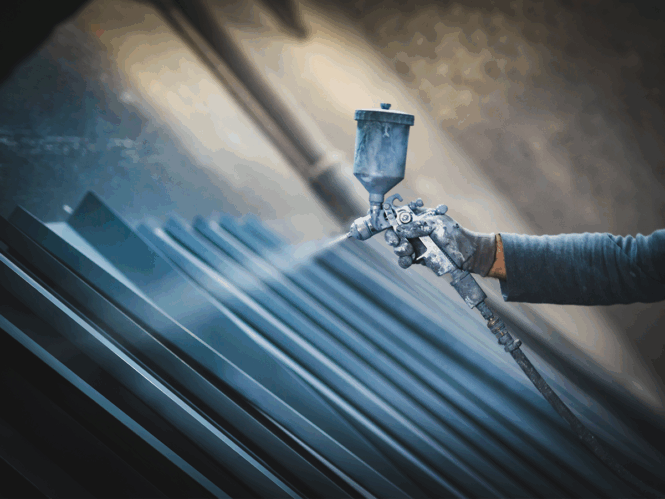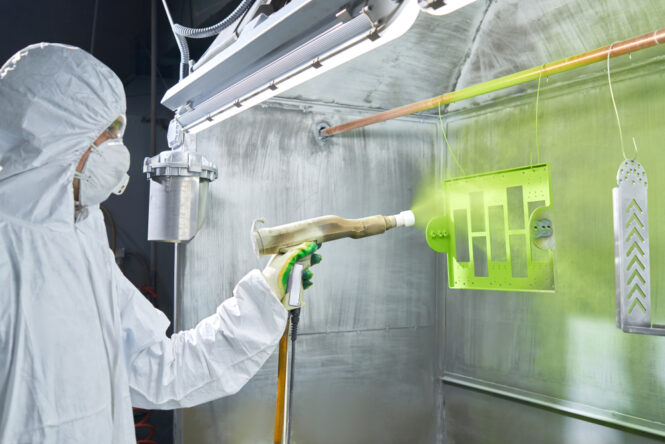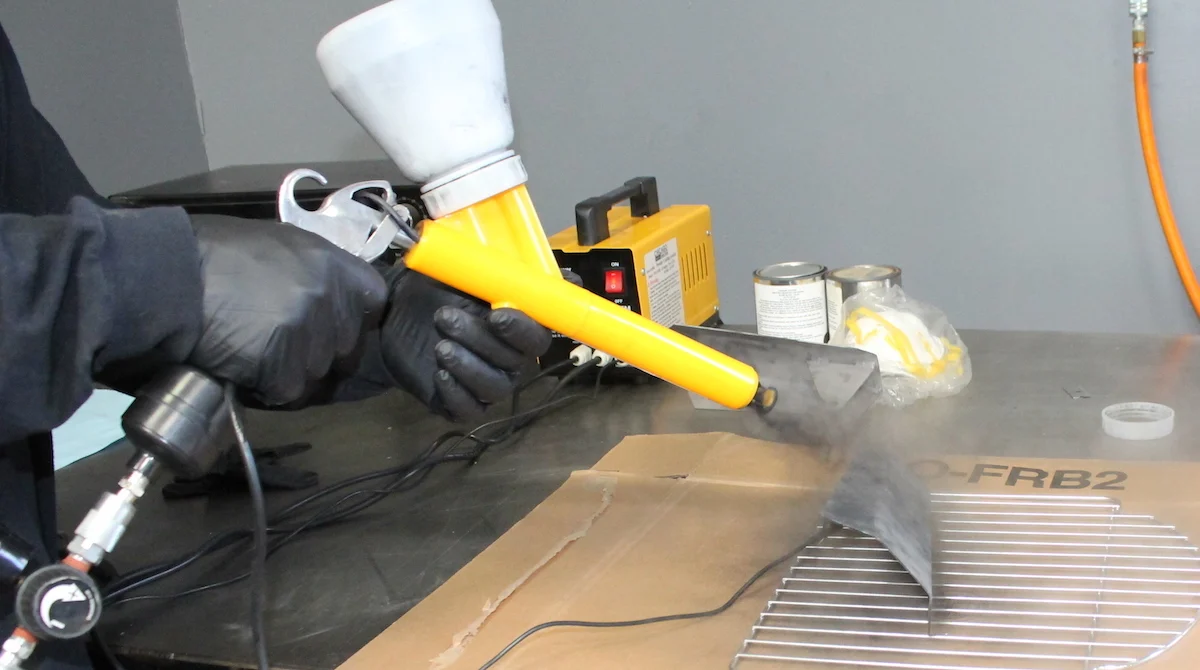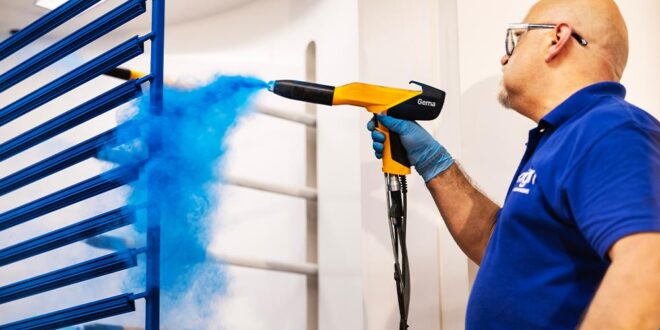Powder coating has become the go-to solution for applying a long-lasting, high-quality finish to metal and other materials.
Known for its durability, environmental benefits, and cost-efficiency, this is widely used across industries – from automotive and architecture to furniture and consumer electronics.
Whether you’re a manufacturer, fabricator, or DIY enthusiast, understanding how powder coating works and its advantages can help you make informed decisions about surface finishing.
What Is Powder Coating?
It is a dry finishing process that involves applying a fine powder – composed of pigments, resins, and additives – to a surface using an electrostatic charge. The coated item is then cured in an oven, where the powder melts and forms a hard, protective layer.
Unlike traditional liquid paint, this method doesn’t require solvents. This makes it an environmentally friendly choice and contributes to a smooth, even finish with fewer imperfections such as drips or runs.
The Powder Coating Process
The standard powder coating process typically follows these steps:
- Surface preparation
The object is thoroughly cleaned to remove oils, dirt, rust, or old coatings. Methods include sandblasting, chemical cleaning, or phosphate treatments to ensure optimal adhesion. - Application
Using a spray gun, the powder is electrostatically charged and sprayed onto the grounded object. The charge causes it to cling evenly to the surface. - Curing
The coated item is placed in a curing oven, where it is heated to temperatures typically ranging from 160°C to 210°C (320°F to 410°F). The heat melts and chemically reacts the powder into a smooth, solid coating. - Cooling and inspection
After curing, the item is cooled and inspected for finish quality, thickness, and consistency.

Benefits of Powder Coating
There are host of advantages over conventional painting and other finishing methods:
- Durability: The cured coating is tough and resistant to chipping, scratching, corrosion, and UV damage, making it ideal for both indoor and outdoor use.
- Eco-friendly: With no harmful solvents or VOC emissions, powder coating is safer for both workers and the environment.
- Cost-efficient: Minimal waste, fewer processing steps, and reduced rework lower the overall cost of finishing.
- High-quality finish: Powder coats produce consistent, uniform coverage and a smooth appearance with excellent colour retention.
- Customisation: A wide range of colours, textures, and finishes – such as matte, gloss, satin, and metallic – are available.
Advances in Powder Coating Technology
As demand for eco-conscious and high-performance finishes has grown, so too has innovation in powder coating technology. New developments in ultra-durable formulations and low-cure powders have expanded the range of materials and applications. For example, low-temperature curing powders now make it possible to coat heat-sensitive substrates like MDF (medium-density fibreboard), enabling wood furniture manufacturers to enjoy the same advantages traditionally reserved for metals.
Additionally, advancements in automation and precision spraying have improved the consistency of finishes in high-volume manufacturing. These technologies reduce overspray, improve transfer efficiency, and lower material waste—making powder coating more sustainable and cost-effective than ever.
Functional coatings have also emerged—powders that offer antimicrobial properties, anti-graffiti resistance, or specific friction characteristics. These specialty options extend its relevance beyond aesthetics, offering solutions in sectors like healthcare, transit, and defense where surface performance is critical.

Common Applications
Powder coating is used across a variety of industries due to its versatility and performance. Common applications include:
- Automotive parts: Wheels, bumpers, engine components, and trim.
- Architectural elements: Window frames, railings, gates, and fencing.
- Furniture: Metal chairs, tables, shelving, and outdoor furnishings.
- Appliances: Washing machines, dryers, and refrigerators.
- Industrial equipment: Machinery parts, enclosures, and electrical components.
Its ability to handle heavy use and harsh conditions makes it a popular choice for commercial, industrial, and consumer products alike.
Choosing a Powder Coating Provider
When selecting a powder coating service, consider the following:
- Experience and expertise: Look for providers with a proven track record across a range of industries.
- Quality control: A reliable service will carry out thorough inspections and maintain tight tolerances for coating thickness and coverage.
- Facility capabilities: Ensure they have the equipment to handle the size, volume, and complexity of your projects.
- Material compatibility: Some providers offer powder coating for metals only, while others may also work with MDF, plastics, or composites.
If you’re seeking a high-quality finish that’s built to last, powder coating services from specialists like those found at Powder Coatings Ltd can provide the durability, efficiency, and visual appeal your project requires.

Comparison ─ Powder Coating vs Liquid Paint
Below is a quick comparison of powder coating and conventional liquid paint to help you determine which might be better suited for your project:
|
Feature |
Powder Coating |
Liquid Paint |
| Application Method | Electrostatic spray + curing oven | Spray or brush, air-dried or baked |
| Environmental Impact | No solvents, low VOCs | Contains solvents, higher VOCs |
| Durability | Highly resistant to wear, weather, UV | Less durable; may chip or fade faster |
| Finish Quality | Smooth, uniform, drip-free | Risk of drips, bubbles, or streaks |
| Cost Efficiency | Lower waste, long-lasting | May require frequent reapplication |
While liquid paint still has its uses—especially for field touch-ups or complex, non-metal surfaces—powder coating is often the preferred option for durability, consistency, and sustainability.
Protective Finishes Built to Withstand Time
Durability in finishing is more than just surface appeal—it’s about long-term protection against moisture, rust, abrasion, and UV damage. Industrial and architectural products often require coatings that hold up under extreme weather, frequent handling, or mechanical stress.
That’s why high-performance finishes are essential in sectors like construction, transportation, and outdoor furniture manufacturing. Whether you’re aiming to enhance longevity or reduce maintenance needs, choosing the right surface treatment early in the production process ensures your item performs just as well in year five as it did on day one.
Final Thoughts
Powder coating has revolutionised the finishing industry with its blend of resilience, environmental responsibility, and visual appeal. Whether you need a protective coat for industrial machinery or a sleek finish for architectural metalwork, this technique offers a reliable and attractive solution.
By understanding the process, benefits, and applications of powder coating, you can better determine when and how to use it – and ensure that your finished product looks great and lasts for years to come.
 Imagup General Magazine 2025
Imagup General Magazine 2025
